Wildlife photographers always have a wish list of species that they would like to put in front of the lens. For those who photograph birds the list is often headed by dramatic or colourful species such as kingfishers and owls. My personal list includes some species that are not immediately obvious but which I have always found myself drawn to. One such species, which is usually tucked away on the last page of bird identification books, is the Corn Bunting.
Why I have been so drawn to this large plain coloured bunting is difficult to say. Even the RSPB website describe it as 'nondescript' but I think I have always been fascinated by its unusual shaped beak and odd metallic song.
The Corn Bunting is one of the countryside species that have suffered from the effects of intensive agriculture. The loss of hedgerows, use of herbicides and insecticides that have diminished their natural food supply, more efficient farming methods leading to less spilt grains have all contributed to its precipitous decline. As such it is now classified as a threatened Red List species in the UK. Part of the problem appears to be caused by Corn Bunting behaviour as they tend to spend their entire life with close proximity to where they were reared. Therefore the birds do not tend to relocate to escape the pressures and find better habitat leading to their inevitable decline. Obviously steps are being taken through funding and grants to improve agricultural areas with reinstatement of hedgerows, set aside and the use of buffer strips around fields but is it too little and too late for the Corn Bunting? It would be a sad loss if the summer fields became silent to their unique song.
My first encounter with a Corn Bunting occurred earlier in the year, during my spring trip to Mallorca, and I decided then to make it a target species for this year. A small population exists locally and I headed out early one mid-summer morning to see if I could find some to photograph. They are quite easy birds to locate as their song is so distinct and has been described as metallic jangling keys. The first bird I came across was perched on a ripening crop of barley and just caught the rising sun before it disappeared in the cloud layer above.
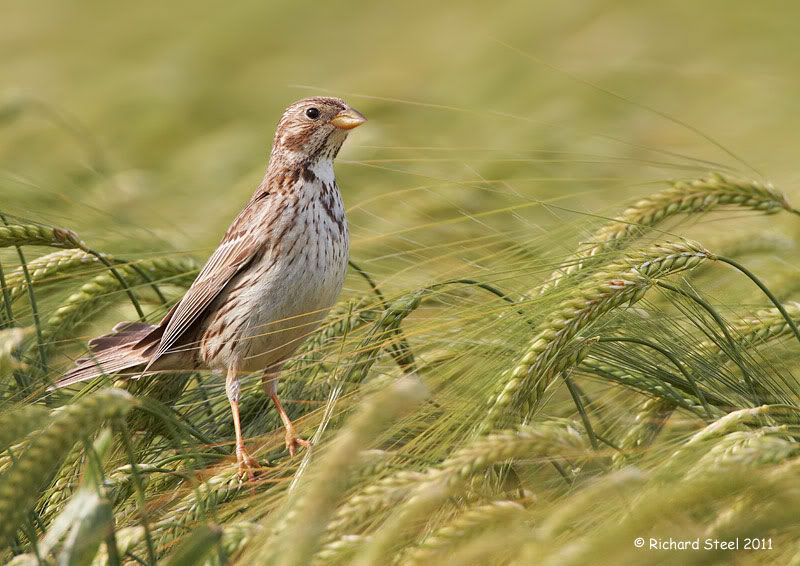
I stayed with the bird a while but decided that the long wispy heads of the barley were making it difficult to get a clear photograph of the bird and I would move on to try and find another. My search took me to an area about 5 miles away where I had recalled a report of a flock during the previous winter. Once more I located a bird but this time in a much better setting and at point blank range.
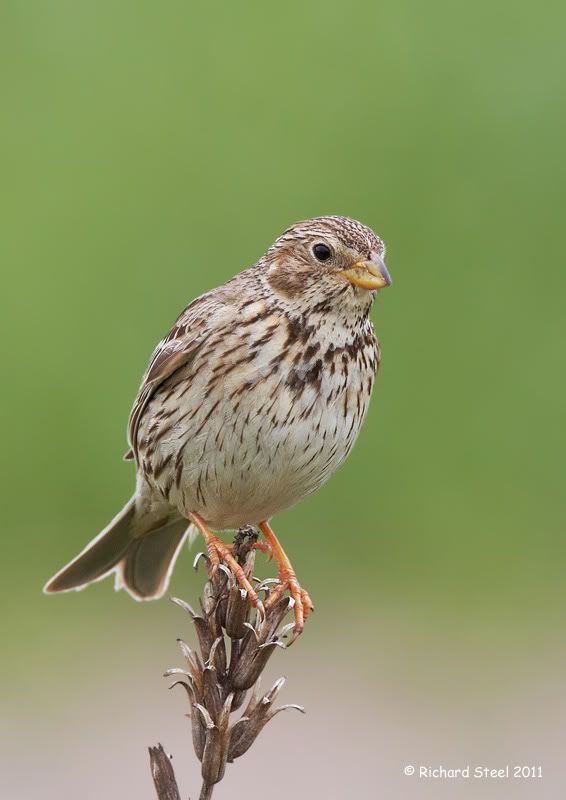
The bird then burst in to song and it was strange to watch it producing this odd sound at such close range.
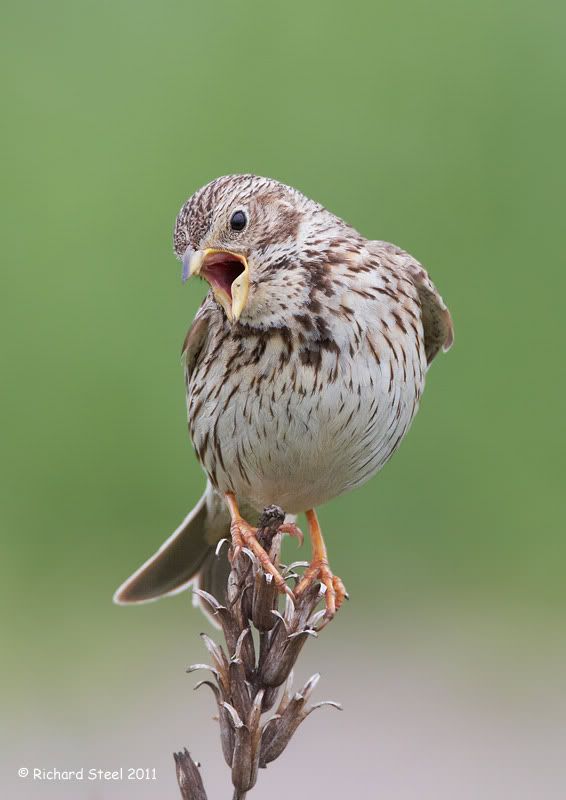

The bird would make occasion short flights during which it look quite peculiar with its dangling legs but would always return to the same song perch. A useful lesson learnt for the photographer. I moved on to scout around the area to try and find other birds, with a future return trip in mind, and found 2 other photographable birds.
Showing the unusual 'bunting' beak in close up. Perfectly adapted for rapidly manipulating and de-husking seeds.
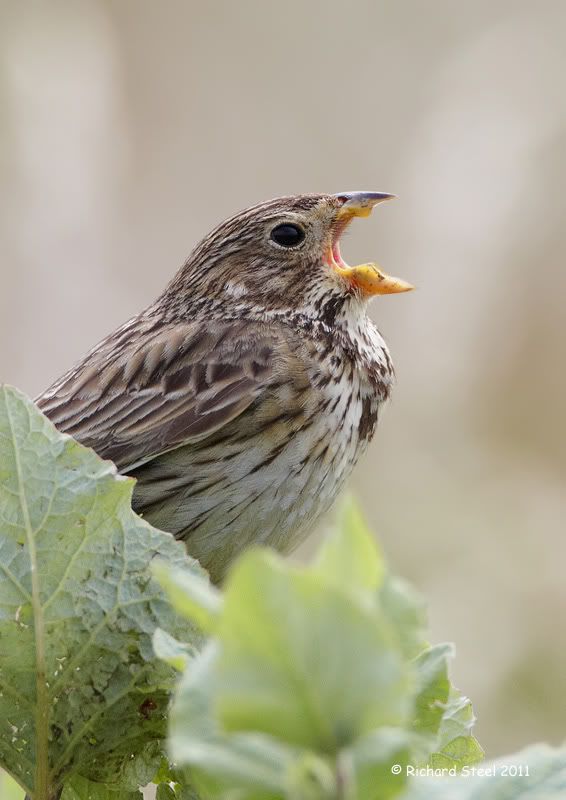
The final bird was in full song amongst some weeds at the edge of a field.
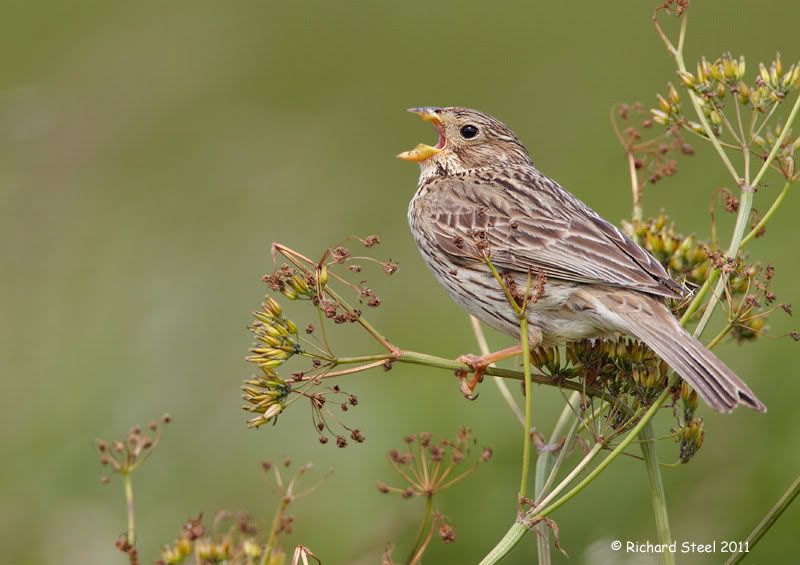

This first session had been a promising start to my mini Corn Bunting mission with several birds located and some good general observations made on their behaviour. However, the results of my return visit will have to wait until another blog post.













5 comments:
What a fantastic banner photograph of the deer. Marvelous. Love the Corn Buntings too.
Cracking set of shots.
HI Richard...Amazing photo's wih the it's mouth open and having the beak visable to see the cross bill effect!!
I really liked this post... my favorite one is the fourth one down!! loved it!! : }}
Grace
Always an enjoyable experience looking in on your photographs Richard....Great stuff.
Beautiful images of this beautiful species. That is quite an unusual beak, yet as your stated made to do the task at hand~
Post a Comment